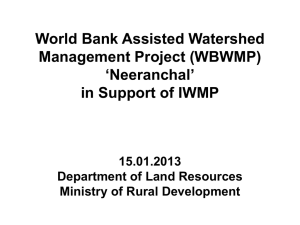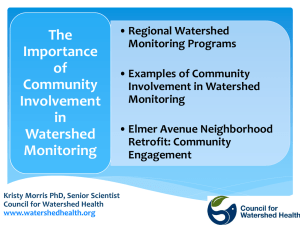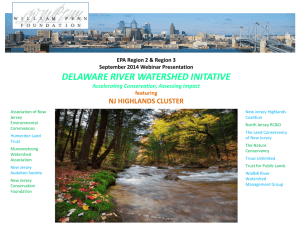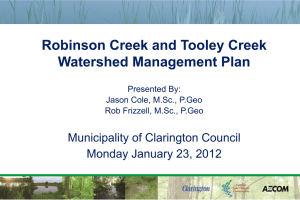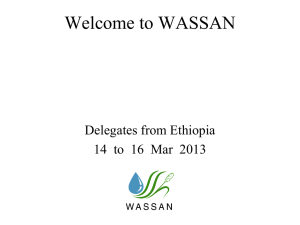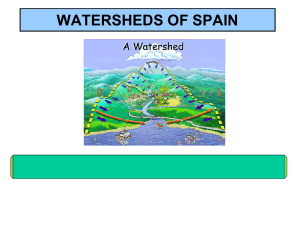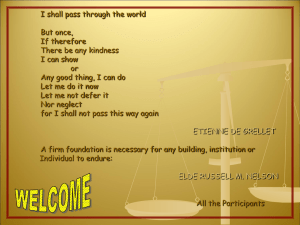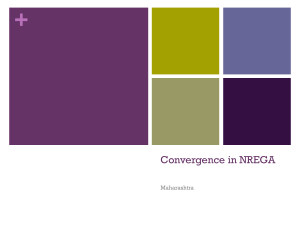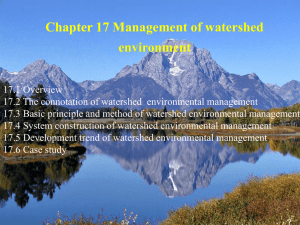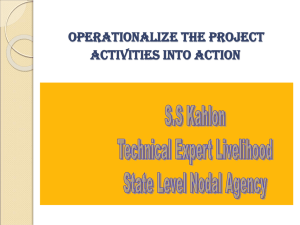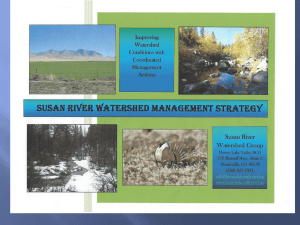Big River Watershed Group Relevance to Community
advertisement
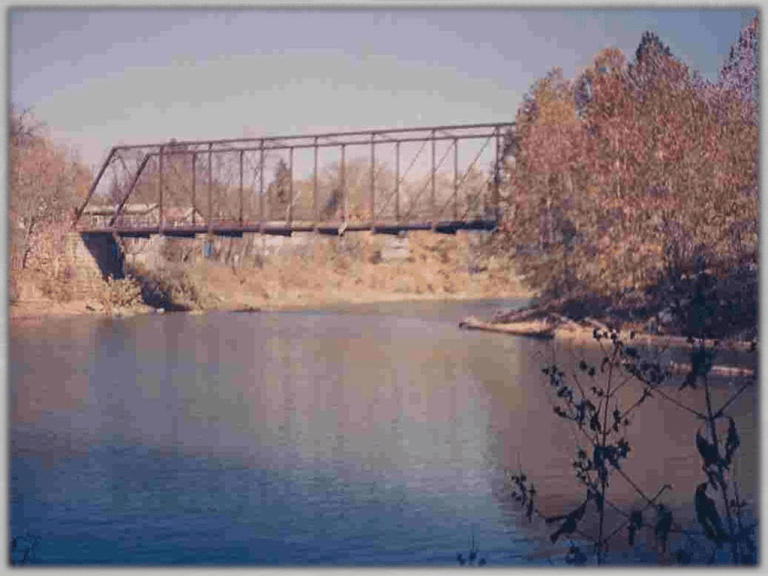
Big River Watershed Group Relevance to Community • Government agencies will be doing something in this county soon, based on the recent ASARCO settlement: • Make decisions about how lead (metals) will be removed or managed (i.e. - where/how) • Plan/Implement Construction Projects • Suggest/Implement New Regulations and/or Restrictions on Use of Floodplain Resources • Address lead-health issues inside/out of floodplain Big River Watershed Group Relevance to Community • Agencies have asked for Community Input • Questions & Concerns • Outcomes & Objectives • Local knowledge; Current & Historical • Perspectives • Etc. Big River Watershed Group Relevance to Community • Local Impacts to be considered: – Environment: How we deal with contaminants? – Natural Resources: How do we repair damages? – Economics How do the construction projects affect local: • • • • Jobs/contracts? New/existing recreational amenities? Commercial operations on River/Floodplain? Agriculture? – Public Health: How to protect our citizens? Big River Watershed Group Relevance to Community Developing a Road Map for Long Term Management of the Watershed Multiple Administrations ◦ Political ◦ Bureaucratic Multiple Agency Interests Multiple Funding Sources/Opportunities Big River Master Planning Process How did we get here? • U.S. EPA Superfund Actions throughout Old Leadbelt • Six Superfund Designations in St. Francois County • Successful suit against PRP (Potentially Responsible Party) • “ASARCO” - the American Smelting & Refining Company • Significant financial resources awarded in suit for cleanup and repair of natural resource damages throughout nation • $100 MM awarded to MO • $10’s MM designated for use in Old Lead Belt • Trustees: U.S. EPA; U.S. Fish/Wildlife; MO DNR Big River Master Planning Process How did we get here? St. Francois County Big River Watershed Group ◦ Formed by MO DNR to address lead load in Big River ◦ Met for several years to address watershed issues Including Active Stream Team ◦ Helped inform and engage County Commission in Watershed Discussion with the agencies. Big River Master Planning Process How did we get here? – Commission/Agencies discussed path forward – Contemplated notion of multi-county initiative – Washington, Jefferson & St. Francois County Commissions/Council formed collaborative – Collaborative applied to EPA for funding – Superfund Cooperative Agreement Executed to develop “Master Plan” – Collaborative Issued RFQ for/hired consultant Big River Master Planning Process How did we get here? Consultant – URS Corporation, St. Louis ◦ Accomplished in Regional Collaborations ◦ Previous Involvement in SEMO-specific Initiatives ◦ Project Manager is a St. Francois County resident ◦ Hired in December, 2010 by Counties Scope of Work: ◦ Create and support local Watershed Groups ◦ Facilitate meaningful/thoughtful communications ◦ Create Master Plan Big River Master Planning Process How did we get here? URS met with Officials from each County URS met with each agency – multiple programs URS worked with each County to secure local leadership/participation for Watershed Groups URS created a draft Master Plan Outline Local Group Leaders provided for Watershed Group meeting logistics, outreach and facilitation (tonight) Big River Master Planning Process What are we going to do? Create a communications network for the group ◦ You don’t have to be present at meetings to be informed or provide input – Subcommittees may also be contemplated Review Master Plan Outline (tonight) Populate, refine and complete the Master Plan Continuously share input/insights with ◦ Local citizenry, advocacy organizations, industry associations ◦ Elective officials ◦ Agency representatives & officials ◦ Media Big River Master Planning Process Draft Master Plan Outline 1. Executive Summary 2. Watershed Planning – General Issues 3. Big River Watershed Issues – regulatory, statutory & legal status 4. Big River Watershed – Defined 5. Stakeholder Objectives 6. Institutional Participation 7. Information/Data Summary 8. Information/Data Gap Summary (fluid) 9. Master Planning Process Defined/Memorialized 10. Assimilation of Plans 11. Plan & Implementation Schedules 12. Monitoring/Oversight Summaries, Follow-up, Etc. 4. Big River Watershed - Defined ◦ Big River & its Tributaries Physical attributes Historical, current and anticipated future use Known & suspected deterioration ◦ Watershed Characterization Legacy of Mining Known challenges Unknown challenges – material carried off site Other Land Use Issues - downstream Impacts yet to be determined 319 Program Assistance 4. Big River Watershed – Defined • Jurisdictions •Counties •Communities Legislative & Congressional Districts Local, state and federal agencies •Soil & Water Conservation Districts •Waste Water Treatment/Utility Districts •Etc. (Cont’d) 4. Big River Watershed – Defined (Cont’d) ◦ Stakeholders & Partners Inhabitants (citizens) of the watershed County residents Transient users of the watershed (tourists, sportsman, etc.) Environmental & Conservation Advocates Public Health Advocates Economic Interests Community/Region Economic Development Organizations Business Associations and individual commercial operators Agricultural Associations and farmers Labor Unions/collaboratives Jurisdictional Interests Other….. 5. Stakeholder Objectives, Perspectives, Etc.? ◦ Healthy river/tributary/watershed ecosystem Mitigate known threat to populations in Big & Meramec Rivers (Mussels, etc.) ◦ Healthy human population Mitigate threats to citizens from heavy metal concentrations in materials in-stream as well as materials removed from the watershed (soil/gravel/etc.). 5. Stakeholder Objectives, Perspectives, Etc.? (Cont’d) ◦ Healthy regional community/economy Increased utility of water resources for recreation Maximum benefit from plan implementation (planned construction) Local contractors & labor used on construction projects Leverage planned construction to support new infrastructure and/or amenities in/about watershed Commercial Exploitation of Floodplain ◦ Satisfaction of all known regulatory requirements ◦ Creation of new and/or necessary statutory/regulatory controls in support of the Watershed Contact Information Mike Alesandrini Senior Consultant URS Corporation mike_alesandrini@urscorp.com* 314-753-2416 *Underscore between mike_alesandrini, above



